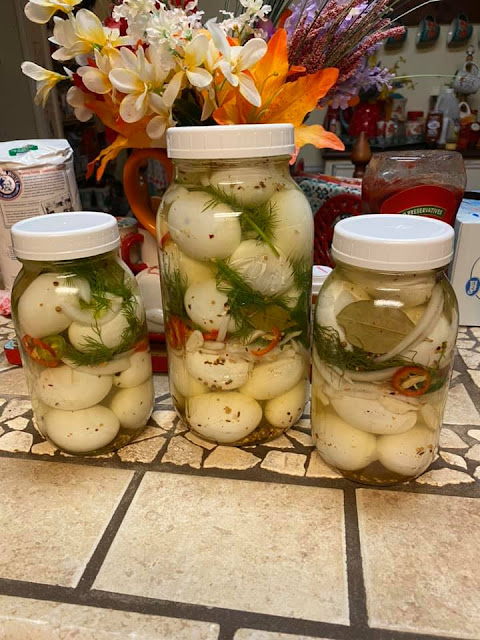Preserving Perfection: Mastering the Art of Wax Sealing Jars for Homemade Fruit Preserves
Preserving homemade jams, jellies, marmalades, and fruit preserves is a delightful way to capture the flavors of fresh fruits at their peak and enjoy them throughout the year.
While traditional canning methods involve using lids and bands, an alternative technique called wax sealing offers a nostalgic and charming approach to preserving these delectable spreads. In this article, we'll delve into the art of wax sealing jars and explore how this method can be employed to safeguard your favorite fruit preserves. Join us as we uncover the steps and benefits of wax sealing, ensuring your homemade jams remain fresh and delicious.
The Art of Wax Sealing Jars: Preserving Jam, Jelly, Marmalade, and Fruit Preserves
Preserving the vibrant flavors of fresh fruits through homemade jams, jellies, marmalades, and fruit preserves is a time-honored tradition. While traditional canning methods utilizing lids and bands are widely practiced, another preservation technique—wax sealing—offers a unique and visually appealing approach. By employing a layer of wax to seal the jars, this method not only safeguards your flavorful creations but also adds a touch of nostalgia and charm. In this article, we'll guide you through the art of wax sealing jars, focusing on its application for preserving jam, jelly, marmalade, fruit preserves, and similar spreads. Get ready to embark on a culinary journey that combines preservation with aesthetics.
Wax Sealing Jars: Step-by-Step Guide
Before you begin, it's essential to note that wax sealing is only recommended for certain types of preserves, including jam, jelly, marmalade, fruit preserves, and similar spreads. This method is not suitable for low-acid or perishable foods, as they require a more robust preservation process.
Step 1: Prepare Your Jars and Preserves
- Wash your jars, lids, and bands in hot, soapy water, and rinse them thoroughly.
- Ensure your jars are completely dry before filling them with your homemade preserves. Make sure your preserves are hot and ready to pour into the jars.
Step 2: Fill the Jars
- Fill each jar with your prepared preserves, leaving the appropriate headspace as recommended for your specific recipe.
- Remove any air bubbles by gently tapping the jars on a countertop or using a non-metallic utensil to release trapped air pockets.
Step 3: Apply Wax to the Jars
- Melt food-grade paraffin wax in a double boiler or a heatproof container over low heat. Be cautious when working with hot wax to avoid burns or accidents.
- Once the wax has melted completely, pour a thin layer of wax onto the surface of each jar, ensuring it covers the preserves entirely.
- Allow the wax to cool and harden for a few minutes.
Step 4: Repeat Wax Coating
- After the initial layer of wax has hardened, repeat the process by adding a second layer of melted wax to provide a more secure seal.
- Ensure that the wax completely covers the first layer and extends beyond the rim of the jar to create an effective barrier against air and contaminants.
Step 5: Label and Store
- Once the wax has thoroughly hardened and formed a solid seal, label each jar with the contents and date.
- Store the wax-sealed jars in a cool, dark place away from direct sunlight and excessive heat. Proper storage conditions are essential for maintaining the quality and flavor of your preserved spreads.
Benefits of Wax Sealing Jars
1. Aesthetic Appeal:
Wax sealing adds an element of visual charm to your preserved jars, evoking a sense of nostalgia and craftsmanship. The smooth, glossy layer of wax creates an attractive seal that enhances the overall presentation of your homemade preserves.
2. Additional Protection:
The wax layer acts as an additional barrier, helping to keep air, moisture, and contaminants away from your preserves. This can help extend the shelf life and maintain the quality of your jams, jellies, marmalades, and fruit preserves.
3. Easy Accessibility:
Unlike traditional canning methods that require removing lids and bands, wax-sealed jars can be easily opened by gently breaking the wax seal. This makes it convenient to access your preserves whenever you desire a taste of your homemade goodness.
Wax sealing jars offers a visually appealing and nostalgic approach to preserving your homemade jams, jellies, marmalades, and fruit preserves.
By following the step-by-step guide outlined in this article, you can create a protective seal that not only adds charm but also helps maintain the freshness and flavor of your delectable spreads. Remember, wax sealing is recommended only for certain types of preserves, so ensure you choose recipes that are suitable for this method. Embrace the art of wax sealing and enjoy the satisfaction of preserving your favorite fruit flavors in a unique and delightful way.






















Comments
Do you have to add lids and bands
ReplyDeleteNo
ReplyDeletemy aunt used this method. She would use a piece of pretty fabric she used shear scisdors to cut out 2 inches wider than jar and use an elstic band to cover wax before storing in basement cupboard, a cool dark place.
ReplyDeleteBesides looking cute, it serverd an important purpose.
She would heat up a coat hanger wire my uncle fashioned on a old hand scroll saw handle or you can make one, that was 4 inches wider than her biggest stove element.
Shed rest the wire over heat and cut off bottom and sides of used wax immediately when preserves were opened so no mold had time to form on organic reminants of wax.
Shed then rinse the good wax in warm water, then dry on its edge in a rack. later that day when very dry, it was added to a muslin cloth bag inside an old coffee tin.
Waste not, want not.
She had to buy very little new wax each year. it can add up fast.